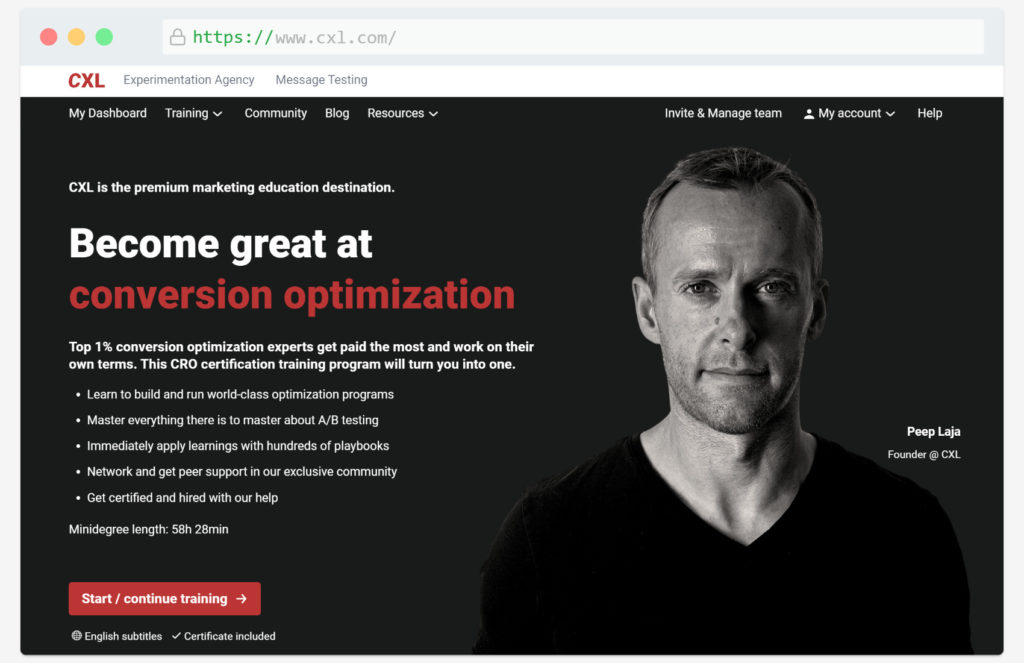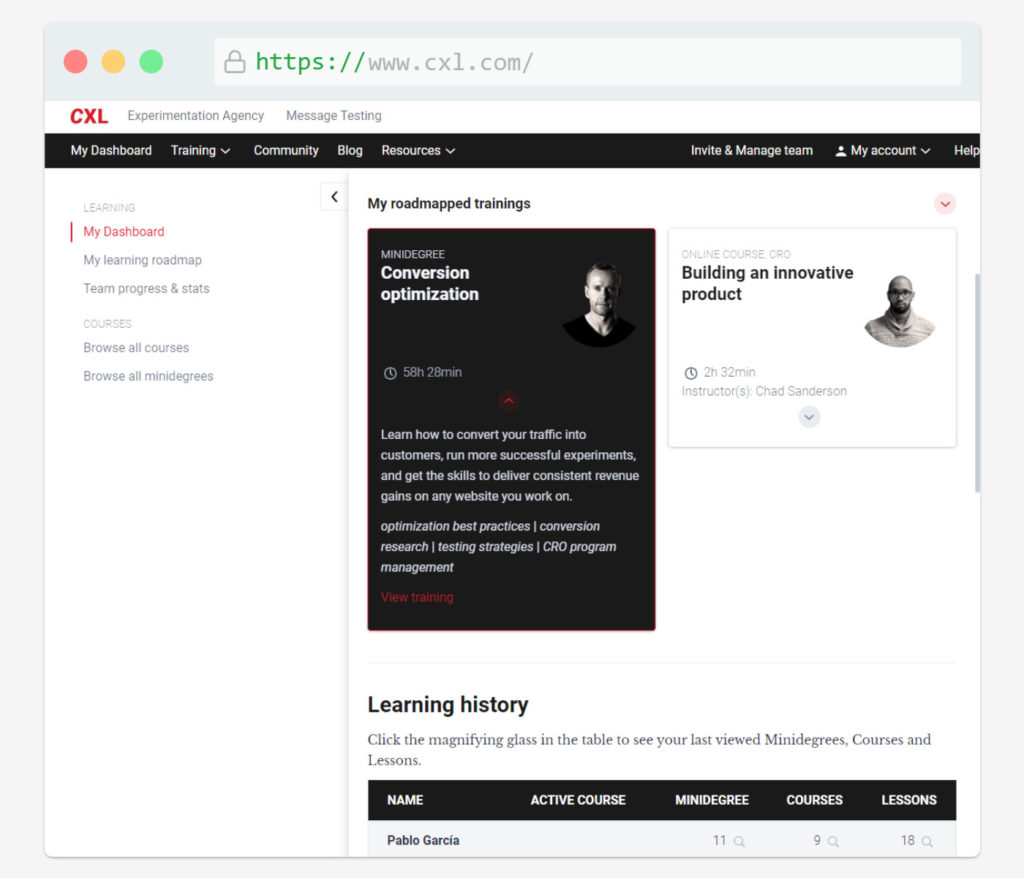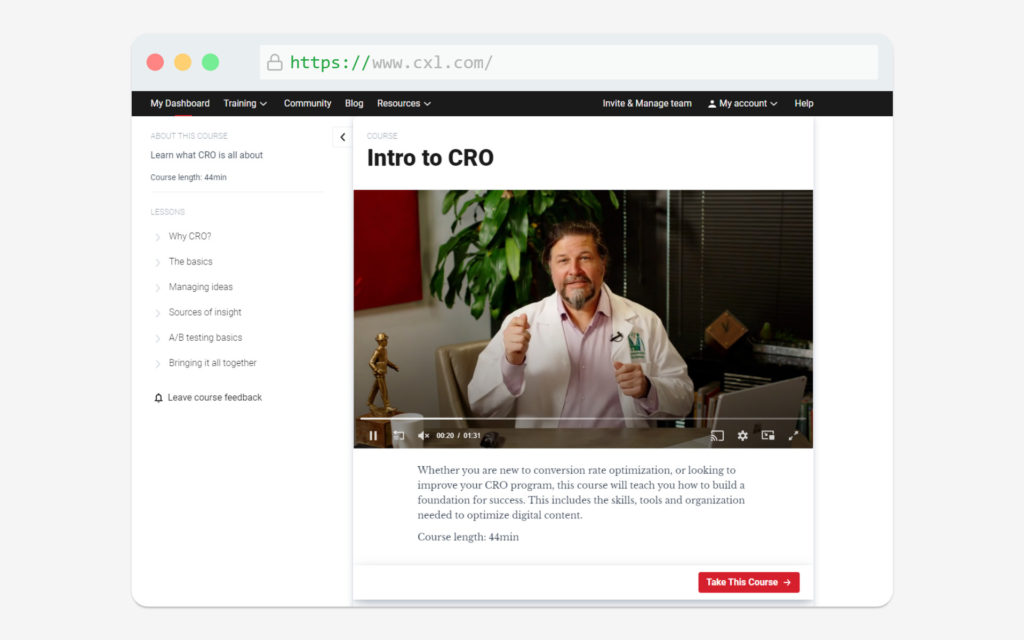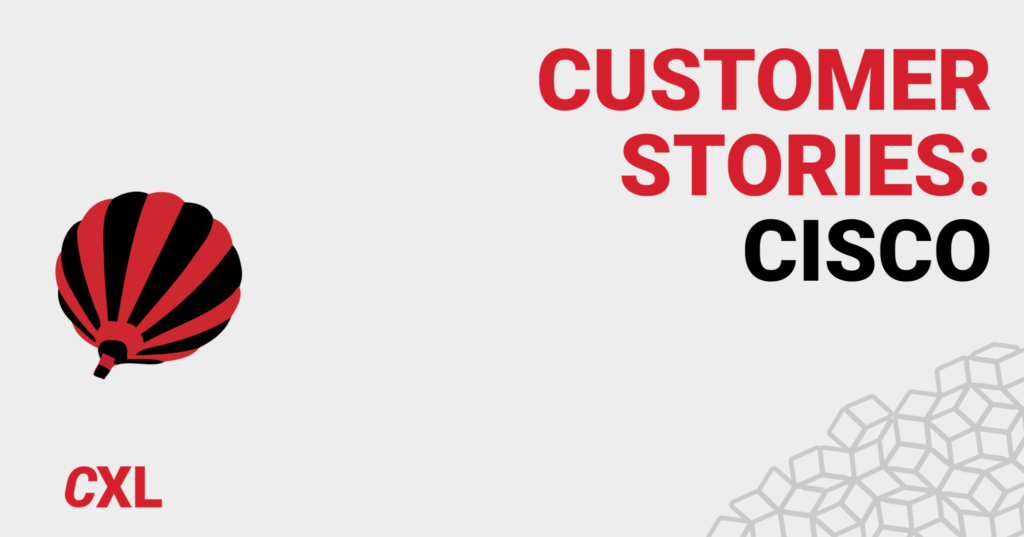How do you even begin building an experimentation culture at a $51 billion company with over 80,000 employees?
Cisco has been providing networking and security solutions since 1984. When you’re one of the largest tech companies in the world, fostering a data-driven experimentation approach can prove challenging.
In this edition of customer stories, we’ll look at how Cisco is progressing in its digital transition and influencing stakeholders on its optimization and experimentation journey, with the help of CXL training.
Table of contents
The status quo: crafting an experimentation culture
Trying to retrofit agile practices is not easy when you’re a tech giant. This is why CXL courses helped Cisco marketers learn best practices, cutting-edge frameworks, and optimization techniques.

As a tech giant that’s currently undergoing a digital transformation of its own, Cisco has revamped its website, including its forms, landing pages, and other tools in its funnel.
The company is also increasing its SaaS offering, adding ecommerce solutions, and testing new products out in specific areas to keep pace with the user’s expectations. And since they rely mainly on partners, resellers, and distributors, a strong strategy is needed for some of their very specific products online.
Optimizing on the shoulder of giants

Taking on the optimizer role at a company as gigantic as Cisco is an intimidating endeavor.
Sandip Amlani spent 5 years as the Cisco.com regional lead for EMEA, where he managed the web experience across the European instances of Cisco, covering SEO, User Experience, Personalization, and Optimization.
I had a very broad web experience background throughout my career, and decided that I wanted to focus on Optimization quite late. As such, I didn’t come at it from a practitioner level, and that meant that I had some technical and strategic gaps in my knowledge.
There’s only so much you can learn from LinkedIn and other free resources, so I turned to CXL.
Sandip Amlani
When he joined the EMEA team, there was no systematic process for testing marketing implementation. Sandip says that the biggest opportunities weren’t easy to spot and testing was often conducted with a scattergun approach.
During that time in the European team, he built quite a self-contained team consisting of Web Experience managers whose job was to roll out and optimize global journeys and experiences to priority EMEA sites.

They were supported by specialists within the team covering the key digital disciplines of SEO, UX, CRO, and personalization.
Now, creating this team was one thing, but the challenge was getting everyone pulling in the right direction, and part of that was the need for everyone to speak the same language across multiple disciplines.
When it came to Optimization, the team had very different levels of understanding, because of their backgrounds and stage of their career. Instilling a common understanding of principles, best practices and processes was key to our success.
Sandip Amlani
Of course, when you’re a huge company like Cisco, effecting change is expected to take a longer time.
However, the EMEA web experience team was very autonomous and had the capacity to test different concepts and experiences that would have taken much longer to do at a Global level.
Upskilling this team was key to achieving the autonomy to start experimenting, as they needed more confidence in presenting their optimization ideas to later articulate with stakeholders and collaborate with the global team.
Upskilling a CRO team with CXL
When he started working towards an experimentation culture across his team, Sandip used three different strategies:
- He recommended general marketing resources such as books for the whole team to read.
- He brought in speakers specializing in optimization to share their knowledge.
- Most significantly, he started a team subscription to CXL.
The clarity that CXL gave is unparalleled. It broke everything down into a way that makes sense, even to complete beginners.
Sandip Amlani
The team of Cisco markets and optimizers subscribed to the All-Acccess subscription and got access to 100+ courses on the latest marketing practices.

They got all the training programs that the team needed to succeed, but one of them was especially important: the Conversion Optimization Minidegree.
I wanted everybody to be educated to a certain level. All of my team members took the minidegree in conversion optimization – including me.
As a result, we were talking the same language and driving in the same direction. It allowed us to have much more confidence when we’re talking to stakeholders and it elevated the team to a higher level generally.
Sandip Amlani
Sandip’s team took dozens of courses, with several optimizers achieving a full minidegree in CRO – a huge increase in skill level for the entire team.
All of the instructors providing the courses were fantastic, very knowledgeable and engaging.
Sandip Amlani
The CXL training roadmap allowed the team to constantly track learning progress. Having the ability to see which courses each team member did and when they were last logged in was a really good way to keep track.

This feature was also used before having one-to-ones to continue encouraging them to carve out a few hours a week during work time and make progress on their courses.
Leadership fully endorsed and empowered team members to use at least half a day a week to focus on external training, development, education, and improving themselves,
The results
After sufficient progress with the CXL marketing training, the Cisco EMEA team was able to ramp up testing.
The courses gave them more confidence to move away from scattergun testing and instead follow a process that strategically and systematically optimized experiences.

The EMEA team also implemented the PXL prioritization framework and customized it specifically for Cisco, allowing them to understand where to focus their efforts.
It made me very proud when concepts from course contents actually made their way onto to our documents and artifacts that we shared with our stakeholders.
Sandip Amlani
Deep knowledge in optimization was game-changing for Cisco. It helped them politely push back stakeholders without offending them, influence their decision-making process, and improve how they talked with their stakeholders.
Whenever a stakeholder wanted to run a low-value experiment, they no longer had to follow through and run it anyway. They now have the expertise and confidence to articulate what tests should be prioritized, asking meaningful questions like:
- “What is it that we’re trying to achieve here?
- “What is your objective?”
- “What metric are you trying to influence, and why is that important for your objectives?”
The team felt a lot more confident to push back to stakeholders for low value test ideas and suggest more impactful tests that actually addressed their objectives.
Sandip Amlani
Navigating this terrain can be a challenge for marketers. Still, as a manager, Sandip effectively filtered out ideas that lacked research-based foundations, elevating the quality of tests conducted in EMEA.
Thanks to the acquired testing knowledge and experience, Cisco came up with more impactful experiments that addressed underlying problems.



